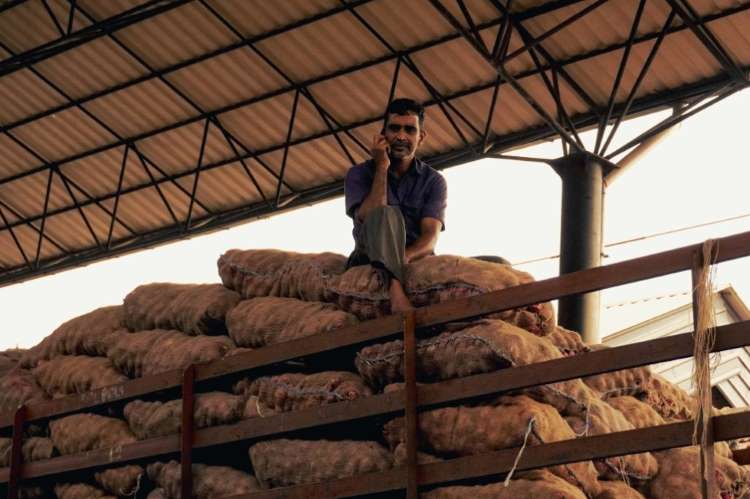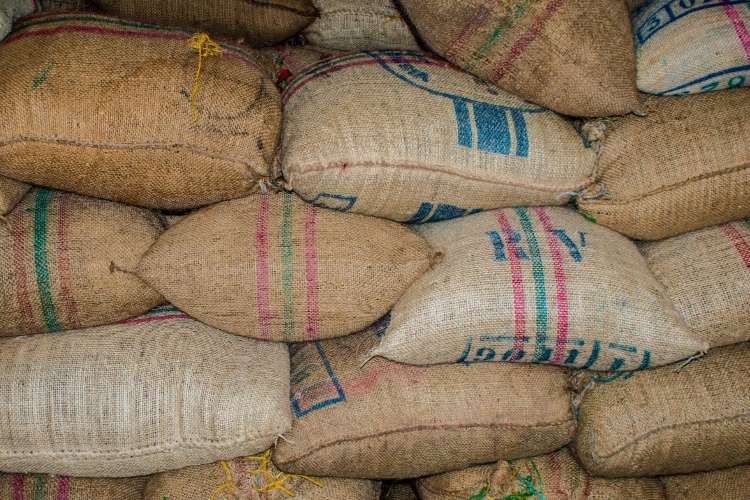
As 2023 comes to a close, India’s agriculture trade finds itself at a watershed moment beset by complex challenges and declining trade figures. The latest report from the department of commerce reveals a sector in flux, with agricultural exports and imports estimated at $43.3 billion and $33.0 billion respectively, marking a significant downturn from previous years. This scenario is not just a reflection of immediate market dynamics, but also a manifestation of deeper systemic issues, says a report.
From an over-dependence on a narrow range of commodities such as rice and sugar to infrastructural inadequacies and policy conundrums, the Indian agriculture sector is contending with a multitude of factors that threaten its stability and growth. As the backbone of the Indian economy, the agriculture sector’s ability to adapt and reform in the face of these challenges will be crucial in determining its future trajectory and impact on the nation’s overall economic health, says the report by Global Trade Research Initiative, a New Delhi-based think tank.
READ I RCEP rises: India must chart own course for global trade success
Pain points for India’s agriculture trade
India’s agriculture trade faces a myriad of deep-seated challenges, each contributing to the sector’s current predicament.
The concentrated nature of India’s agricultural exports is a major concern. In 2023, more than half of the country’s agricultural exports were attributed to just five products, with rice and sugar alone constituting 37.4%. This reliance on a handful of commodities exposes the sector to immense risk. Global market fluctuations and domestic policy decisions, such as export bans, can have a disproportionate impact on the overall trade balance. This scenario underscores the need for a more diversified export basket that can withstand global market pressures and policy changes.
Another critical challenge is the lack of robust infrastructure and logistics. India’s agriculture sector suffers from inadequate cold chain facilities, leading to significant spoilage of perishable goods. This deficiency directly impacts export competitiveness, as a large proportion of agricultural produce fails to meet the quality standards required for global markets. Furthermore, the transportation network is plagued by inefficiencies, with congested routes and an absence of dedicated cold chain transport corridors, resulting in elevated transportation costs and delays. These factors collectively handicap the country’s export capabilities, necessitating immediate attention and investment in infrastructure development.

The diverse and often fragmented nature of Indian agriculture further complicates efforts to maintain consistent product quality. With varying farming practices across regions, ensuring uniformity in quality for large-scale buyers and export markets is a daunting task. Moreover, the complex and often opaque nature of supply chains, characterised by multiple intermediaries, impedes efforts to track the origin and handling of products. This lack of traceability not only increases the risk of fraud and adulteration but also erodes consumer trust and compromises food safety standards. Indian agricultural products often struggle to meet the stringent international standards of quality and traceability, adversely impacting their marketability and reputation on the global stage.
Policy challenges for farm trade
India’s agricultural policies, particularly its large public stockholding for food security, have come under scrutiny at the World Trade Organisation (WTO). Developed countries, led by the US, argue that these policies distort global agricultural markets by driving down prices and incentivising overproduction. India defends its policies as essential for ensuring food security for its vast population. The ongoing negotiations and the uncertainty surrounding the “Peace Clause” exacerbate the challenges, casting a shadow over India’s agricultural trade prospects.
In 2023, the decline in both exports and imports paints a concerning picture. The over-dependence on rice and sugar, subject to frequent export bans and international disputes, limits the sector’s growth potential. On the import front, the surge in the import of pulses and fresh fruits is a telltale sign of the stresses on domestic production capabilities. These dynamics necessitate a re-evaluation of India’s agricultural trade strategy, focusing on diversifying export commodities and bolstering domestic production to reduce dependency on imports.
The way ahead
India needs to broaden its agricultural export base. Diversifying the range of exported commodities can provide a buffer against global market volatilities and reduce the impact of domestic policy shifts. This diversification should be coupled with initiatives to promote high-value and niche agricultural products, tapping into new and emerging markets.
Developing a robust cold chain infrastructure is crucial. Investments in modern storage facilities, efficient transportation networks, and dedicated cold chain corridors can significantly reduce spoilage and enhance export competitiveness. Additionally, modernising logistics management practices will play a pivotal role in streamlining the supply chain and reducing operational costs.
Adopting uniform quality standards and implementing comprehensive traceability systems are essential. These measures will not only ensure compliance with international standards but also enhance the global reputation of Indian agricultural products. Leveraging technology, such as blockchain and IoT, can aid in achieving greater transparency and reliability in the supply chain.
Constructive engagement in WTO negotiations is vital. Aligning domestic policies with global trade norms, while advocating for fair and equitable trade rules, is essential for the sustainable growth of India’s agricultural sector.
India can draw valuable lessons from global agricultural trends. The approaches of the US and EU, which focus on technology-driven, export-oriented policies, offer insights into building a resilient agricultural economy. Similarly, China’s strategy of securing food resources along its “New Silk Road” underscores the importance of strategic planning and resource allocation in agriculture.
India has been implementing farm-to-fork and traceability systems across various agricultural products. These initiatives, though varying in pace and extent, are crucial steps towards enhancing quality, safety, and market accessibility. However, challenges remain in terms of scalability, cost, and infrastructure. Despite these hurdles, the increasing awareness of the benefits for both farmers and consumers is driving continued progress in this area.
The state of India’s agriculture trade in 2023 is a clarion call for urgent, comprehensive reforms. The sector’s future hinges on its ability to diversify, improve infrastructure, enforce quality standards, and adapt to global trade dynamics. While the challenges are daunting, the opportunities for growth and global competitiveness are immense. With the right mix of policy interventions and industry innovation, Indian agriculture can transform these challenges into catalysts for sustainable growth.
